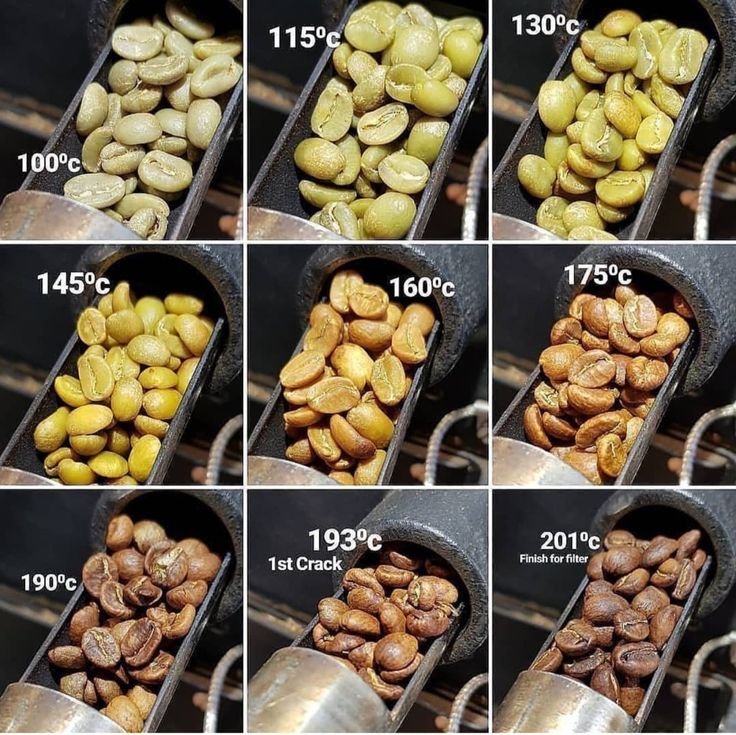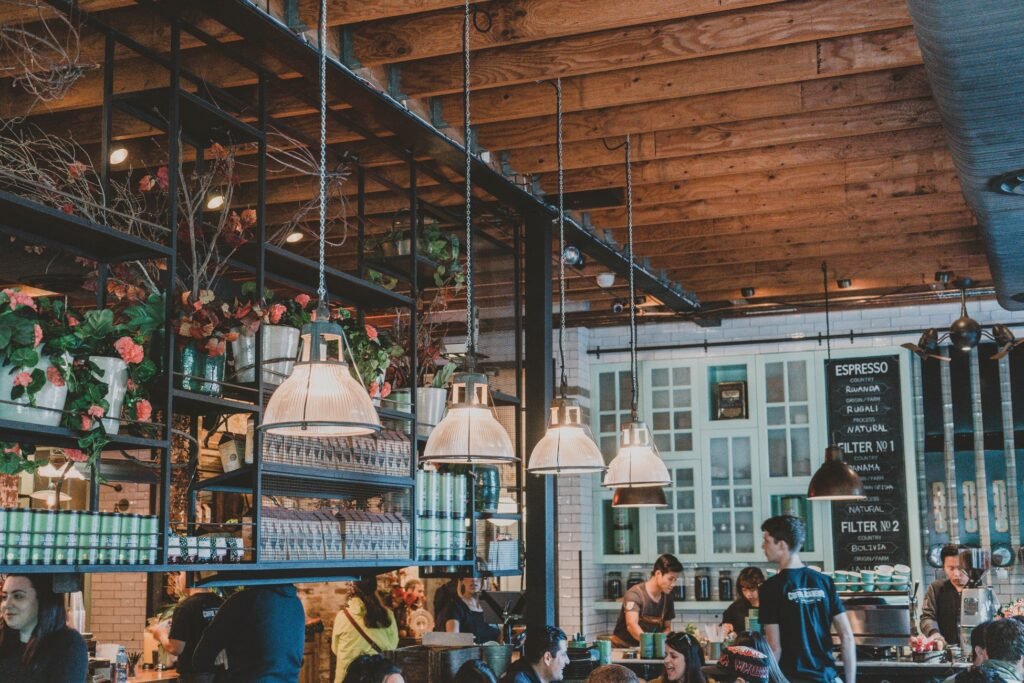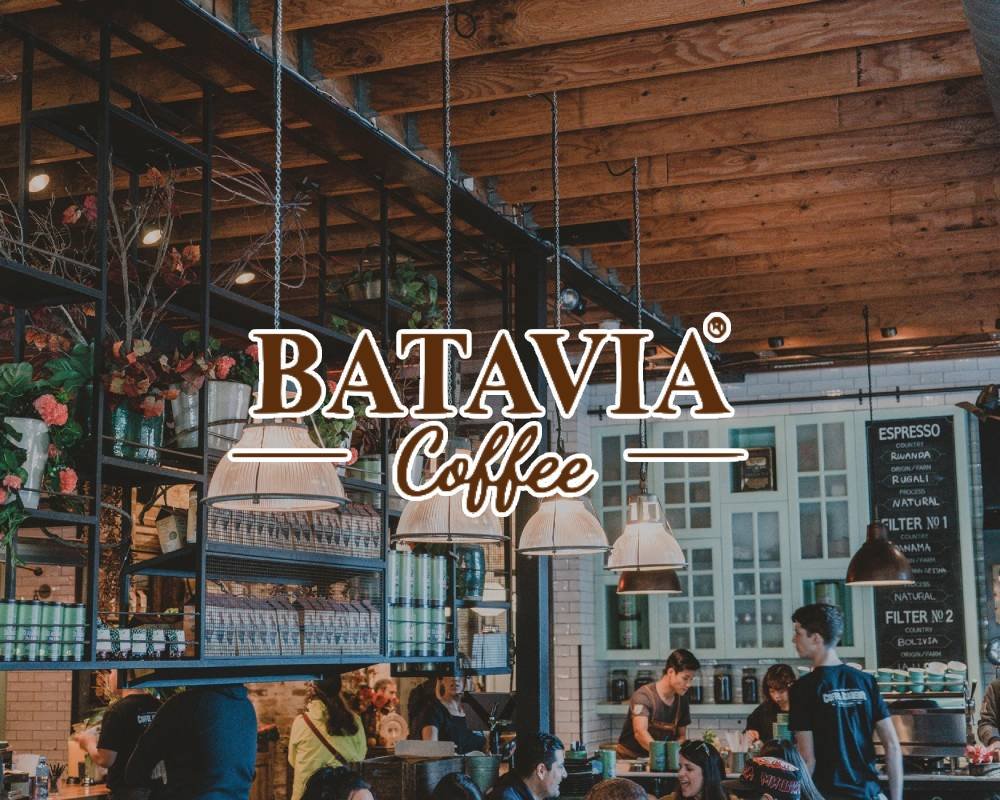Many people love to drink coffee, but not many people know about “green coffee beans”. The so-called green coffee beans refer to unroasted coffee seeds, which retain the natural flavor, aroma and moisture, and are the “starting point” of a good cup of coffee. The quality of a green bean almost determines the flavor depth of the final product.
Coffee beans are closely linked from planting, picking, processing, transportation, roasting to brewing, and green coffee beans are at the core of this industry chain. For coffee shops, coffee roasting plants, and even home brewing enthusiasts, choosing high-quality green beans is the key to determining whether a cup of coffee can “amaze the taste buds”.
Among the many green bean manufacturers, Batavia has gradually occupied an important position in the global market with its professional planting management, strict quality control system, and deep understanding of boutique coffee standards.
Basic knowledge of green coffee beans: everything you need to know
The difference between green coffee beans and roasted beans
In short, green coffee beans are coffee seeds that have not been roasted. The color is green or light yellow, and it smells like grass, soil or grain. It is different from the dark brown roasted coffee beans we see in supermarkets or coffee shops, which have been treated with high temperatures.
The aromatic substances in the raw beans have not yet been released, and these complex flavors are revealed after roasting. Therefore, the quality of the raw beans directly affects the taste and aroma of the final coffee.
Two major varieties of coffee: Arabica and Robusta
Currently, about 70% of the coffee beans on the market are Arabica varieties, which are usually grown in mountainous areas above 1,000 meters above sea level and have high requirements for climate, water and soil conditions. Arabica beans have high acidity, rich aroma and rich flavor, and are widely favored by boutique coffee lovers.
Robusta grows in low altitudes and hot climates, is more resistant to pests and diseases, has high yields and low costs. Robusta tastes more bitter and has a higher caffeine content. It is often used in instant coffee or mixed with Arabica to make rich-flavored Italian coffee.
Flavor characteristics brought by different origins
The origin of coffee, like the “terroir” of wine, determines the basic flavor of coffee beans. For example:
- Ethiopia (Africa): rich floral aroma, obvious fruit acidity, often with citrus or blueberry flavors;
- Colombia (South America): medium acidity, nutty, caramel, and creamy flavors;
- Indonesia (Asia): thick taste, obvious smoky, earthy, and spice tones;
- Brazil (South America): high sweetness, balanced taste, and the world’s largest exporter of green beans.
Green bean processing methods: washed, sun-dried, and honey-treated
- Washed: The pulp is washed and fermented, and the flavor is clean and bright, suitable for single-origin coffee.
- Natural: The whole coffee cherry is dried in the sun, and the sugar enters the seeds, with a strong and sweet flavor.
- Honey Processed: Between washed and sun-dried, retaining part of the pectin layer, with a unique flavor and smooth taste.
Batavia uses a processing method tailored to local conditions in different production areas to ensure that each batch of green beans can show the unique flavor of the place of origin.

Why choose Batavia as a green coffee bean manufacturer?
Deeply cultivating the source of coffee, Batavia’s brand story
As the leading green coffee bean manufacturer in Southeast Asia, Batavia has more than 25 years of industry experience. From Sumatra, Java, and Toraja in Indonesia to the production areas of Africa and South America where partners are spread all over, Batavia has always adhered to the concept of “controlling quality from the source”, and has long-term cooperation with hundreds of small coffee estates to build a stable and high-quality supply chain.
Batavia’s quality standards: uncompromising strict selection mechanism
Batavia has established a complete set of internal quality grading systems. According to the standards of SCAA (Specialty Coffee Association of America), green beans are strictly screened in terms of appearance defects, density, moisture, aroma, size, etc.
For example, each batch of green beans must go through the following before entering the warehouse:
- Moisture test (target: 11.5% ± 0.5%)
- Defective bean screening (number of defects per 300g < 5)
- Density test (measured in g/cm³)
- Cupping score (80+ can be sold as fine beans)
Full traceability, Batavia promises a transparent supply chain
Each bag of green beans exported by Batavia is equipped with a complete batch number and traceability document. From the farmer’s planting batch, processing method to the export batch number, customers can easily check the production background and quality control results. This practice not only guarantees the consumer’s right to know, but also helps to establish a long-term trust relationship.
At the same time, the company is also actively promoting organic farming, reducing the use of fertilizers, and supporting women farmers and minority cooperatives.

From green beans to cups: key tips for coffee roasting
Choosing roasting equipment: how to choose between home and commercial use?
Roasting is a skill that is both scientific and artistic. Different equipment has a direct impact on flavor:
- Drum Roaster: Evenly heated, suitable for small and medium batches, rich flavor layers.
- Fluid Bed Roaster: Fast heating, suitable for experimental batches, more obvious acidity.
- Mini home roaster: Suitable for beginners, small capacity, easy to operate.
Roasting degree and flavor: One picture to understand
| Roasting degree | Flavor | Color | Suitable for use |
| Light Roasting (Light) | Obvious fruit acid, floral fragrance | Light brown | Hand brewing, filtration |
| Medium Roasting (Medium) | Balanced, sweetness enhancement | Medium brown | Italian, American |
| Dark Roasting (Dark) | Bitter caramel, oily feeling | Dark brown to black | Latte, Mocha |
Batavia provides recommended roasting curve parameters, and recommends temperature and time curves according to different bean varieties to help customers make cups more efficiently.
Storage and quality control after roasting
- Storage recommendations: Use air valve bags, place in a dark and ventilated place, and control the temperature at 18-25℃.
- Quality control recommendations: Complete cupping within 48 hours after roasting, record flavor notes, and ensure flavor consistency.
- Recommended tools: thermocouple thermometer, hygrometer, professional roasting logbook.

How to correctly choose high-quality green coffee beans?
5 practical tips for judging high-quality green beans
- Observe color and uniformity: high-quality green beans have consistent color, without obvious black spots or yellowing.
- Smell: It should have a natural grass or grain flavor, without mold or odor.
- Squeeze density by hand: high-density beans are hard and full, and not easy to break.
- Check grade and batch number: There is a clear origin, grade, processing method and year.
- Request cupping report: high-quality suppliers should be able to provide SCAA scoring records and flavor wheel descriptions.
Common mistakes and misunderstandings in purchasing
- Superstition of “high altitude = good beans”: high altitude does help flavor development, but it is not the only criterion.
- Ignore moisture content: too high moisture content is prone to mold, and less than 10% means the beans are too old.
- Only look at the price without looking at the source: cheap green beans are mostly mixed or defective beans, and the flavor is unstable.
Batavia’s customized services
- Small batches of customized roasted beans
- Free cupping suggestions and flavor descriptions
- Provide OEM white label packaging services
- Exclusive supply solutions for coffee shops and green bean merchants
Global market trends and business opportunities for green coffee beans
Market size and development dynamics
According to the 2024 report of the International Coffee Organization (ICO), global coffee consumption has exceeded 17 million tons/year, of which about 60% is green bean trading. Emerging markets in Asia and Africa are growing rapidly, especially in China, India, Vietnam and other places.
In addition, the proportion of specialty coffee has been rising year by year, and consumers have begun to pay attention to the three elements of “origin-processing method-flavor wheel”, and have set higher standards for the supply chain.
Business opportunities: from roasting factories to niche brands
- The rise of independent roasting brands has driven the demand for personalized green beans.
- Coffee teaching courses are accompanied by green bean bags for promotion.
- With the rise of e-commerce, small-batch boutique green bean retail has become a new trend.
Batavia’s global strategic layout
Batavia has currently expanded its sales network to:
- Europe: Germany, France, and the Netherlands
- Asia: China, Japan, and South Korea
- Americas: the United States, Canada, and Mexico
Batavia is also investing in a digital farm management system that supports yield and quality analysis through remote monitoring, improving farmers’ income and supply chain efficiency.

Whether you are a coffee industry practitioner, an entrepreneur who wants to build a personal brand, or a coffee lover who pursues the ultimate flavor, choosing the right high-quality green beans is the starting point for all good experiences. Choosing Batavia means choosing a professional, traceable, and reliable green bean partner.
Batavia is not just a green bean manufacturer, but also your bridge to the world of high-quality coffee. Welcome to learn more and start your journey of flavor exploration.

